Limited Liability Partnership Act – Objective | Features | Legal Framework
- Blog|Company Law|
- 14 Min Read
- By Taxmann
- |
- Last Updated on 21 March, 2024

Table of Contents
- Introduction
- Partners and Designated Partners of LLP
- Characteristic/Salient Features of LLP
- Advantages of LLP
- Incorporation of LLP
- Differences with other forms of Organisation
Check out Taxmann's Business Laws (Law) | Study Material which presents essential legal concepts for business laws across seven divisions. It features a blend of previous exam papers, MCQs, theoretical and practice questions, including case studies, with simple, lucid language and hints for answers. It is tailored to student needs and incorporates feedback from author-student interactions and teaching experiences, making it a comprehensive resource for CA aspirants. CA Foundation | New Syllabus | June/Dec. 2024 Exams
1. Introduction
1.1 Limited Liability Partnership Act, 2008
Limited Liability Partnership Act have been enacted to make provisions for the formation and regulation of Limited Liability Partnerships. The Limited Liability Partnership Act, 2008 was enacted by the Parliament on 12th December 2008, which received the assent of the President on 7th January, 2009 and was notified with effect from 31st March, 2009. Most of the sections of Limited Liability Act, 2008 came into force from 31st March 2009. It extends to the whole of India. The Ministry of Corporate Affairs (MCA) and the Registrar of Companies (ROC) are entrusted with the task of administrating the LLP Act, 2008. The Central Government has the authority to frame the Rules with regard to the LLP Act, 2008, and can amend them by notifications in the Official Gazette, from time to time.
It contains 81 sections and 4 schedules.
| The First Schedule | Deals with mutual rights and duties of partners, as well limited liability partnership and its partners where there is absence of a formal agreement with respect to them. |
| The Second Schedule | Deals with conversion of a firm into LLP. |
| The Third Schedule | Deals with conversion of a private company into LLP. |
| The Fourth Schedule | Deals with conversion of unlisted public company into LLP. |
On 13th August 2021, The Limited Liability Partnership Act, 2008 has been amended by The Limited Liability Partnership (Amendment) Act, 2021.
1.2 Need for Limited Liability Partnership
A need has been felt to make a new legislation related to a new corporate form of business organization in India to meet with the contemporary growth of the Indian economy. The traditional partnership has a flexibility of organising their internal structure but suffers from unlimited liability and lack of business continuity. Further, company has the benefit of limited liability and perpetual succession but has a high compliance cost. Thus LLP is an alternative corporate business vehicle which provides the benefit of limited liability and perpetual succession at a low compliance cost.
1.3 Meaning and Concept of Limited Liability Partnership
A LLP is a new form of legal business entity with limited liability. It is a separate legal entity where LLP itself is liable to the third parties upto the assets it owns but the liability of the partners is limited. It is an alternative corporate business vehicle that not only gives the benefits of limited liability at low compliance cost but allows its partners the flexibility of organising their internal structure as a traditional partnership. It gives the benefits of limited liability of a company and the flexibility of a partnership.
LLP is also called as a hybrid between a company and a partnership as it contains elements of both, a corporate entity as well as a partnership.
Limited Liability Partnership means a partnership formed and registered under this Act. [Sec. 2(1)(n)]
1.4 Indian Partnership Act, 1932 is not applicable
The Indian Partnership Act, 1932 is not applicable to Limited Liability Partnerships (Sec. 4).
2. Partners and Designated Partners of LLP
2.1 Partner Section 5
Any individual or body corporate may be a partner in a LLP.
However, an individual shall not be capable of becoming a partner of a LLP, if—
- he has been found to be of unsound mind by a Court of competent jurisdiction and the finding is in force;
- he is an undischarged insolvent; or
- he has applied to be adjudicated as an insolvent and his application is pending. [Sec. 5]
Partner, in relation to a LLP, means any person who becomes a partner in the LLP in accordance with the LLP agreement [Sec. 2(q)]
2.2 Minimum number of partners (Section 6)
- Every LLP shall have at least two partners.
- If at any time the number of partners of a LLP is reduced below two and the LLP carries on business for more than six months while the number is so reduced, the person, who is the only partner of the LLP during the time that it so carries on business after those six months and has the knowledge of the fact that it is carrying on business with him alone, shall be liable personally for the obligations of the LLP incurred during that period.
2.3 Designated partners (Section 7)
- Every LLP shall have at least two designated partners who are individuals and at least one of them shall be a resident in India.
- If in LLP, all the partners are bodies corporate or in which one or more partners are individuals and bodies corporate, at least two individuals who are partners of such LLP or nominees of such bodies corporate shall act as designated partners.
- Resident in India: For the purposes of this section, the term resident in India means a person who has stayed in India for a period of not less than 120 days during the financial year.
- Financial Year [Section 2(1)(l)]: “Financial year”, in relation to a LLP, means the period from the 1st day of April of a year to the 31st day of March of the following year.
However, in the case of a LLP incorporated after the 30th day of September of a year, the financial year may end on the 31st day of March of the year next following that year.
3. Characteristic/Salient Features of LLP
3.1 A Body Corporate
A LLP is a body corporate formed and incorporated under this Act and is a legal entity separate from that of its partners and shall have perpetual succession [Sec. 2(1)(d)]. A LLP is a body corporate formed and incorporated under LLP Act and is a legal entity separate from the partners constituting it [Sec. 3].
Body Corporate means a company as defined in section 3 of the Companies Act,1956 (now Companies Act, 2013) and includes—
- limited liability partnership registered under this Act;
- a limited liability partnership incorporated outside India; and
- a company incorporated outside India, but does not include:
-
- a corporation sole;
- a co-operative society registered under any law for the time being in force; and
- any other body corporate (not being a company as defined in clause (20) of section 2 of the Companies Act, 2013 or a limited liability partnership as defined in this Act), which the Central Government may, by notification in the Official Gazette, specify in this behalf. [Sec. 2(1)(d)].
3.2 Separate Legal Entity
The LLP is a separate legal entity. It is liable to the full extent of its assets but liability of the partners is limited to their agreed contribution in the LLP. Creditors of LLP shall be the creditors of LLP alone and not of the partners.
3.3 Perpetual Succession
Death, insanity, retirement or insolvency of partners has no impact on the existence of LLP. The LLP can continue its existence irrespective of changes in partners. It is can enter into contracts in its own name. It can also hold properties in its own name. It is created by law and law alone can dissolve it. Any change in the partners of a LLP shall not affect the existence, rights or liabilities of the LLP.
3.4 Absence of Mutual Agency
The cardinal principal of mutual agency of partners in a partnership is missing in LLP. In case of LLP, the partners of LLP are agents of LLP alone and not of the other partners. Hence, no partner can be held liable on account of the independent or unauthorised actions of other partners. Thus individual partners cannot be held liable for liability incurred by another partner’s wrongful business decisions or
3.5 LLP Agreement
The partners are free to make rules related to the mutual rights and duties of the partners as per their choice through an agreement. In the absence of any such agreement, the mutual rights and duties shall be governed by the provisions of the LLP Act, 2008.
It means any written agreement between the partners of the LLP or between the LLP and its partners which determines the mutual rights and duties of the partners and their rights and duties in relation to that LLP [Sec. 2(1)(o)].
3.6 Artificial Person
A LLP is an artificial legal person created by law capable of enjoying all the rights of an individual. It can do everything which a natural person can do, except the contracts of very personal nature like, it cannot marry, it cannot go to jail, cannot take an oath, cannot marry or get divorce. Further, it cannot practice a learned profession like CA, Law or Medicine. A LLP is invisible, intangible, immortal but not fictitious because it really exists.
3.7 Common Seal
Being an artificial person, a LLP work on its own but it has to act through its partners. Hence, it may have a common seal which can be considered as its official signature. [Section 14(c)]. It should be noted that it is not mandatory for a LLP to have a common seal. If it decides to have one, then it shall remain under the custody of some responsible official and it shall be a fixed in the presence of at least 2 designated partners of the LLP.
3.8 Limited Liability
Every partner of a LLP is, for the purpose of the business of LLP, the agent of the LLP, but not of other partners (Section 26). The liability of the partners will be limited to their agreed contribution in the LLP.
3.9 Management of Business
The partners in the LLP are entitled to manage the business of LLP. However, only the designated partners are responsible for legal compliances.
3.10 Minimum and Maximum number of Partners
Every LLP shall have least two partners and shall also have at least 2 individuals as designated partners. It is mandatory that at least one of the designated partners shall be resident in India. Further, there is no maximum limit of partners in LLP.
3.11 Business for profit Only
LLP can be formed only for carrying on any lawful business with a view to earn profit. Thus LLP cannot be formed for charitable or non-for-profit purpose.
“Business” includes every trade, profession, service and occupation except any activity which the Central Government may, by notification, exclude [Sec. 2(1)(e)].
3.12 Investigation
The Central Government shall have powers to investigate the affairs of an LLP by appointment of competence authority.
3.13 Compromise or Arrangement
Any compromise or arrangement including merger and amalgamation of LLPs shall be in accordance with the provisions of the LLP Act, 2008.
3.14 Conversion into LLP
A firm, private company or an unlisted public company would be allowed to be converted into LLP in accordance with the provisions of LLP Act, 2008.
3.15 E-Filling of Documents
Every form or application of document required to be led or delivered under the act and rules made thereunder, shall be led in computer readable electronic form on its website www.mca.gov.in and authenticated by a partner or designated partner of LLP by the use of electronic or digital signature.
3.16 Foreign LLPs [Sec. 2(1)(m)]
“A limited liability partnership formed, incorporated, or registered outside India which established a place of business within India”. Foreign LLP can become a partner in an Indian LLP.
3.17 Small LLP [Sec. 2(1)(ta)]
Small LLP means a limited liability partnership—
- the contribution of which, does not exceed twenty-five lakh rupees or such higher amount, not exceeding five crore rupees, as may be prescribed; and
- the turnover of which, as per the Statement of Accounts and Solvency for the immediately preceding financial year, does not exceed forty lakh rupees or such higher amount, not exceeding fifty crore rupees, as may be prescribed; or
- which meets such other requirements as maybe prescribed, and fulfils such terms and conditions as may be prescribed.
4. Advantages of LLP
Advantages of LLP form of Business Organisation
- It is easier to form a LLP as compared to other corporate forms.
- The partners of a LLP enjoy limited liability.
- It operates on the basis of an agreement.
- It is flexible as far as capital structure is concerned.
- It provides flexibility without imposing detailed legal and procedural requirements.
- It is easy to dissolve an LLP as compared to other corporate forms.
5. Incorporation of LLP
5.1 Reservation of Name (Sec. 16)
A person may apply in such form [Form RUN LLP] and manner and accompanied by such fee as maybe prescribed to the Registrar for the reservation of a name set out in the application as [Sec. 16(1)]—
- the name of a proposed LLP; or
- the name to which a LLP proposes to change its name.
Upon receipt of an application and on payment of the prescribed fee, the Registrar may, if he is satisfied, reserve the name for a period of 3 months from the date of intimation by the Registrar [Sec. 16(2)].
5.2 Requirement for Name (Sec. 15)
Every limited liability partnership shall have either the words “limited liability partnership” or the acronym “LLP” as the last words of its name [Sec. 15(1)]. LLP shall not be registered by a name which, in the opinion of the Central Government is [Sec. 15(2)]—
- undesirable; or
- identical or too nearly resembles to that of any other LLP or a company or a registered trade mark of any other person under the Trade Marks Act, 1999.
5.3 Incorporation Documents (Section 11)
The most important document needed for registration is the incorporation document.
For a LLP to be incorporated [Sec. 11(1)]:
- two or more persons associated for carrying on a lawful business with a view to earn profit shall subscribe their names to an incorporation document;
- the incorporation document shall be filed in such manner and with such fees, as may be prescribed with the Registrar of the State in which the registered office of the LLP is to be situated (Incorporation documents are now processed electronically by Registrar, Central Registration Centre since 2nd October 2018); and
- there shall be filed along with the incorporation document, a statement in the prescribed form:
-
- made by either an advocate, or a Company Secretary or a Chartered Accountant or a Cost Accountant, who is engaged in the formation of the LLP and
- by anyone who subscribed his name to the incorporation document,
- that all the requirements of this Act and the rules made thereunder have been complied with,
- in respect of incorporation and matters precedent and incidental thereto.
The incorporation document shall [Sec. 11(2)]—
- be in a form as may be prescribed;
- state the name of the LLP;
- state the proposed business of the LLP;
- state the address of the registered office of the LLP;
- state the name and address of each of the persons who are to be partners of the LLP on incorporation;
- state the name and address of the persons who are to be designated partners of the LLP on incorporation;
- contain such other information concerning the proposed LLP as may be prescribed.
If a person makes a statement as discussed above which he [Sec. 11(3)]—
- knows to be false; or
- does not believe to be true, shall be punishable:
-
- with imprisonment for a term which may extend to 2 years and
- with fine which shall not be less than ` 10,000 but which may extend to ` 5 Lakhs.
5.4 Incorporation by Registration (Section 12)
If the conditions of section 11 has been complied with i.e.; duly subscribed incorporation document has been filed [Form FiLLiP] along with the statement, then the Registrar shall within 14 days [Sec. 12(1)]:
- Register the incorporation document and
- Give a certificate that LLP is incorporated by the name specified in the incorporation document.
The Registrar may accept the statement delivered under section 11(1)(c) as sufficient evidence that the requirement of registration has been complied with [Sec. 12(2)].
The certificate shall be signed by Registrar and contain his official seal. [Sec. 12(3)]
The certificate shall be conclusive evidence that the LLP is incorporated by the name specified therein [Sec. 12(4)].
5.5 Effect of Registration (Sec. 14)
On Registration, LLP shall by its name, be capable of—
- Suing and being sued;
- Acquiring, owning, holding and developing or disposing of property, whether movable or immovable, tangible or intangible;
- Having a common seal, if it decides to have one; and
- Doing and suffering other acts and things as bodies corporate may lawfully do and suffer.
5.6 Registered Office and Changes therein (Sec. 13)
- Every LLP shall have a registered office to which all communications and notices may be addressed and where they shall be received.
- A document may be served on a LLP or a partner or designated partner thereof by sending it by post under a certificate of posting or by registered post or by any other manner, as may be prescribed, at the registered office and any other address specifically declared by the LLP for the purpose in such form and manner as may be prescribed.
- A LLP may change the place of its registered office and file the notice of such change with the Registrar in such form and manner and subject to such conditions as may be prescribed and any such change shall take effect only upon such filing.
- If the LLP contravenes any provisions of this section, the LLP and its every partner shall be punishable with penalty of ` 500 per day subject to maximum ` 50,000.
Rectification of Name of LLP (Sec. 17)
- If the LLP is registered with a name (or changed its name to a name) which is identical with or too nearly resembles to—
-
- That of any other LLP or a company; or
- A registered trade mark of a proprietor under the Trade Marks Act, 1999, as is likely to be mistaken for it,
- then the LLP or proprietor or company may apply to the Central Government within a period of 3 years from the date of incorporation of LLP.
- the Central Government may direct the LLP to change its name within a period of 3 month from the issue of such direction [Sec. 17(1)].
- LLP shall change its name and give notice of change to Registrar within a period of 15 days from the change along with the order of Central Government.
- Registrar shall carry out the changes in the certificate of incorporation of LLP.
- LLP shall change its name in the LLP agreement within 30 days of change in the certificate of incorporation [Sec. 17(2)].
- If the LLP is in default in complying with any direction given under sub-section (1), the Central Government shall allot a new name to the LLP in such manner as may be prescribed and the Registrar shall enter the new name in the register of LLP in place of the old name and issue a fresh certificate of incorporation with new name, which the LLP shall use thereafter [Sec. 17(3)].
- LLP can subsequently change its name in accordance with the provisions of section 16.
6. Differences with other forms of Organisation
6.1 Distinction Between LLP and Partnership Firm
The points of distinction between a limited liability partnership and partnership firm are tabulated as follows:
| Sr. No. | Basis | LLP | Partnership firm |
| 1. | Regulating Act | The Limited Liability Partnership Act, 2008. | The Indian Partnership Act, 1932. |
| 2. | Body corporate | It is a body corporate. | It is not a body corporate. |
| 3. | Separate legal entity | It is a legal entity separate from its members. | It is a group of persons with no separate legal entity. |
| 4. | Creation | It is created by a legal process called registration under the LLP Act, 2008. | It is created by an agreement between the partners. |
| 5. | Registration | Registration is mandatory. LLP can sue and be sued in its own name. | Registration is voluntary. Only the registered partnership firm can sue the third parties. |
| 6. | Perpetual succession | The death, insanity, retirement or insolvency of the partner(s) does not affect its existence of LLP.
Members may join or leave but its existence continues forever. |
The death, insanity, retirement or insolvency of the partner(s) may affect its existence. It has no perpetual succession. |
| 7. | Name | Name of the LLP to contain the word limited liability partners (LLP) as suffix. | No guidelines. The partners can have any name as per their choice. |
| 8. | Liability | Liability of each partner limited to the extent to agreed contribution except in case of wilful fraud. | Liability of each partner is unlimited. It can be extended upto the personal assets of the partners. |
| 9. | Mutual agency | Each partner can bind the LLP by his own acts but not the other partners. | Each partner can bind the firm as well as other partners by his own acts. |
| 10. | Designated partners | At least two designated partners and atleast one of them shall be resident in India. | There is no provision for such partners under the Partnership Act, 1932. |
| 11. | Common seal | It may have its common seal as its official signatures. | There is no such concept in partnership. |
| 12. | Legal compliances | Only designated partners are responsible for all the compliances and penalties under this Act. | All partners are responsible for all the compliances and penalties under the Act. |
| 13. | Annual filing of documents | LLP is required to file:
(i) Annual statement of accounts (ii) Statement of solvency (iii) Annual return with the registration of LLP every year. |
Partnership firm is not required to file any annual document with the registrar of firms. |
| 14. | Foreign partnership | Foreign nationals can become a partner in a LLP. | Foreign nationals cannot become a partner in a partnership firm. |
| 15. | Minor as partner | Minor cannot be admitted to the benefits of LLP. | Minor can be admitted to the benefits of the partnership with the prior consent of the existing partners. |
6.2 Distinction between LLP and Limited Liability Company
| Sr. No. | Basis | LLP | Limited Liability Company |
| 1. | Regulating Act | The LLP Act, 2008. | The Companies Act, 2013. |
| 2. | Members/Partners | The persons who contribute to LLP are known as partners of the LLP. | The persons who invest the money in the shares are known as members of the company. |
| 3. | Internal governance structure | The internal governance structure of a LLP is governed by contract agreement between the partners. | The internal governance structure of a company is regulated by statute (i.e., Companies Act, 2013). |
| 4. | Name | Name of the LLP to contain the word “Limited Liability partnership” or “LLP” as suffix. | Name of the public company to contain the word “limited” and Pvt. Co. to contain the word “Private limited” as suffix. |
| 5. | No. of members/partners | Minimum – 2 members
Maximum – No such limit on the members in the Act. The members of the LLP can be individuals/or body |
Private company:
Minimum – 2 members Maximum – 200 members Public company: Minimum – 7 members |
| corporate through the nomi-nees. | Maximum – No such limit on the members.
Members can be organizations, trusts, another business form or individuals. |
||
| 6. | Liability of members/partners | Liability of a partners is limited to the extent of agreed contribution in case of intention is fraud. | Liability of a member is limited to the amount unpaid on the shares held by them. |
| 7. | Management | The business of the company managed by the partners including the designated partners authorized in the agreement. | The affairs of the company are managed by board of directors elected by the shareholders. |
| 8. | Minimum number of directors/designated partners | Minimum 2 designated partners. | Pvt. Co. – 2 directors
Public co. – 3 directors |
Disclaimer: The content/information published on the website is only for general information of the user and shall not be construed as legal advice. While the Taxmann has exercised reasonable efforts to ensure the veracity of information/content published, Taxmann shall be under no liability in any manner whatsoever for incorrect information, if any.

Taxmann Publications has a dedicated in-house Research & Editorial Team. This team consists of a team of Chartered Accountants, Company Secretaries, and Lawyers. This team works under the guidance and supervision of editor-in-chief Mr Rakesh Bhargava.
The Research and Editorial Team is responsible for developing reliable and accurate content for the readers. The team follows the six-sigma approach to achieve the benchmark of zero error in its publications and research platforms. The team ensures that the following publication guidelines are thoroughly followed while developing the content:
- The statutory material is obtained only from the authorized and reliable sources
- All the latest developments in the judicial and legislative fields are covered
- Prepare the analytical write-ups on current, controversial, and important issues to help the readers to understand the concept and its implications
- Every content published by Taxmann is complete, accurate and lucid
- All evidence-based statements are supported with proper reference to Section, Circular No., Notification No. or citations
- The golden rules of grammar, style and consistency are thoroughly followed
- Font and size that’s easy to read and remain consistent across all imprint and digital publications are applied
One thought on “Limited Liability Partnership Act – Objective | Features | Legal Framework”
Comments are closed.
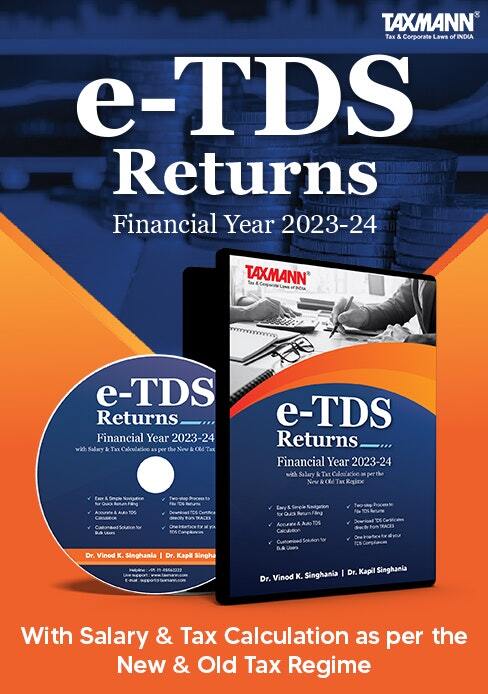

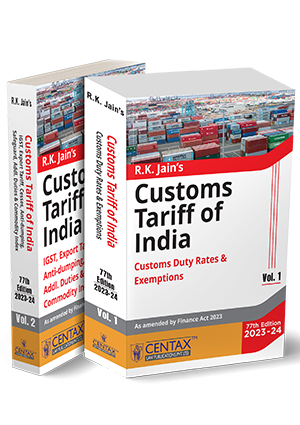
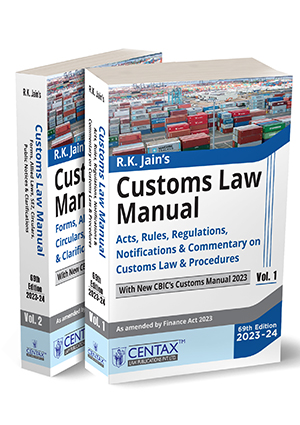
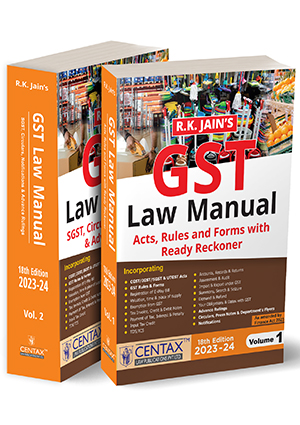
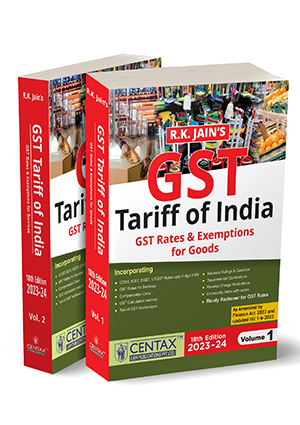

Thank you for providing detailed blog this information is very helpful to know All About Limited Liability Partnership Objective, Beneficiaries, Features and Legal Framework.